1) Ecology Pyramid
Each individual dinosaur fossil found in Grand Staircase did not live in a vacuum, but was part of an entire ecosystem within a biome. Ecosystems are broken down into organizational units that expand in scope much like a pyramid, with the individual organism at the top, a group of those organisms forming a population, populations of different organisms forming biological communities, communities and their environments forming ecosystems, and all related ecosystems in a given region with a similar climate and geography forming a biome. All the units in these different levels are intertwined. You cannot change the climate, chemistry of the soil, or even kill an individual organism without a ripple effect up and down the pyramid. To illustrate this, let’s construct a pyramid with Parasaurolophus at the top.

Search the Internet for different kinds of terrestrial (land based) Cretaceous plant and animal life, draw in as many components as you can into each level. Make sure to include some carnivores, plants and smaller creatures in your community on down. Also be sure and carry everything from the higher levels down to the lower ones, adding things like soil and air as you get to ecosystem.
2) Dinosaur fossils are often not found in isolation, but in groups. As such the challenge of piecing together a complete dinosaur from the jumble of fossil bones found can be difficult.
With your class, try to mimic the process of a dinosaur excavation where you’ve found the bones of two distinct fossils mixed together in one fossil bed. To do so, select two 100 (or more) -piece puzzles.
Exercise 4 – Animal Comparison (Advanced School Activity )
In the fall of 2012 i2P visited the Moremi Game Reserve in Botswana. In the Moremi Game Reserve herbivores such as Impala, Cape Buffalo, Elephants, Giraffe, Gazelle, Stembok, Gemsbok, Hippopotamus, Zebra and carnivores such as Lion, Leopard, Eagle, Hawk, Jackal, Buzzard were witnessed by the i2P expedition. (see the i2P website, Botswana expedition, for videos recorded by the i2P expedition in the Moremi Game reserve, and of course, Moremi Game Reserve approved videos).
Compare the size of the animals in the Moremi Game Reserve to several different dinosaur species. First, compile data on Moremi or animals or your selection (eg. size of organism, femur, skull size, jaw size, but also body mass, daily dietary/nutritional needs and approximate population sizes). Then, with the known facts of dinosaur skeletal sizes, estimate their daily nutritional input, body mass, and approximate populations. Given these estimates, speculate on what the environment may have been like in the time of dinosaurs (atmospheric temperature, environmental conditions, grazing range, dinosaur populations, etc.)